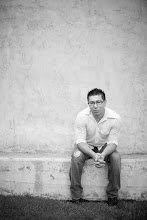Notes from 2005
Rilke: his consciousness of the failure of modern poetic language to encompass both interior and exterior dimensions. His turn from action to visual form as a means to control his sentimental compulsions. Pg. 95
The artist must be the creator-perceiver who has to make a world that is wholly dependent upon him and his craft. The solid object is expanded by being turned into a form of his awareness: “The art to render in a flower, a tree branch, in a birch tree or a young girl full of longing, an entire spring, all fullness and the overflow of day and night.” Pg. 159
Lessons from Rodin: to combat diversity by seeing in each thing a reflection of the whole and by seeing the whole as a functioning organism itself. Pg. 166
Rodin’s belief in the artist’s sacred and unchanging duty toward work turned into a litany of his own agenda. Pg. 167
New Poems: he used artful drama or narrative to manipulate the precarious relation between perceiver and thing. The Gazelle developed this process with particular skill, describing the observed figure by using the narrative mode to overcome the limitations of the painterly form. All props are removed: the reader is faced with the bare process itself as a precisely perceiving mind engages itself in the object to be woven in to the poem’s language. Pg. 274
Sensuality must spread out and transform itself “until it becomes equally strong and sweet and seductive in every place and every thing.... as each thing surmounts the sexual state, it turns, in its most sensuous fullness, into a spiritual state, a presence with which one can only lie in God. Pg 285.
Rilke’s figure of the Angel: the Angel of the elegies has nothing to do with the angels of the Christian heaven (rather with the angelic figures of Islam: the Angel was now the perfect, all powerful figure of God’s creation, encompassing all sexes, encompassing total reality both visible and invisible by absorbing the former into the latter, which consistently obtained the highest rank.
Projecting the figure of the Angel, as an original construct of an overpowering and distant consciousness was Rilke’s way of breaking through the limits of the private self, confined by the certainty of death. pg. 324
Rilke’s lecture: theory of poetry based on the notion of a “primal sound”: the idea assumes that the mechanism of the brain and that of a primitive recording instrument are parallel in structure. A basic tone above and below the possibility of conscious perception reveals a subterranean music commanding lovers and poets alike, and so functions as the primary element in the sound structure of poetry.... another indication of how the poet must reach from the visible to the invisible as he reproduces hidden sound formations in the brain and brings together all buried memories and feelings in its synaesthetic display. Pg 441
The Open: Alfred Schuler.
Rilke speculated that the ordering activity of art is evoked by two inner situations: the consciousness of a superabundance of creative energy and the complete collapse of the person who makes way for his creations.
Rilke

No comments:
Post a Comment